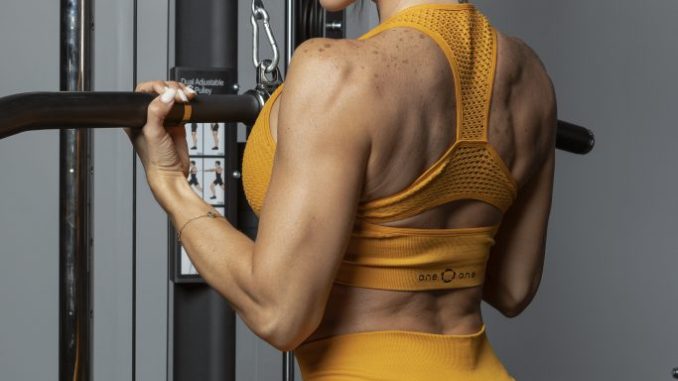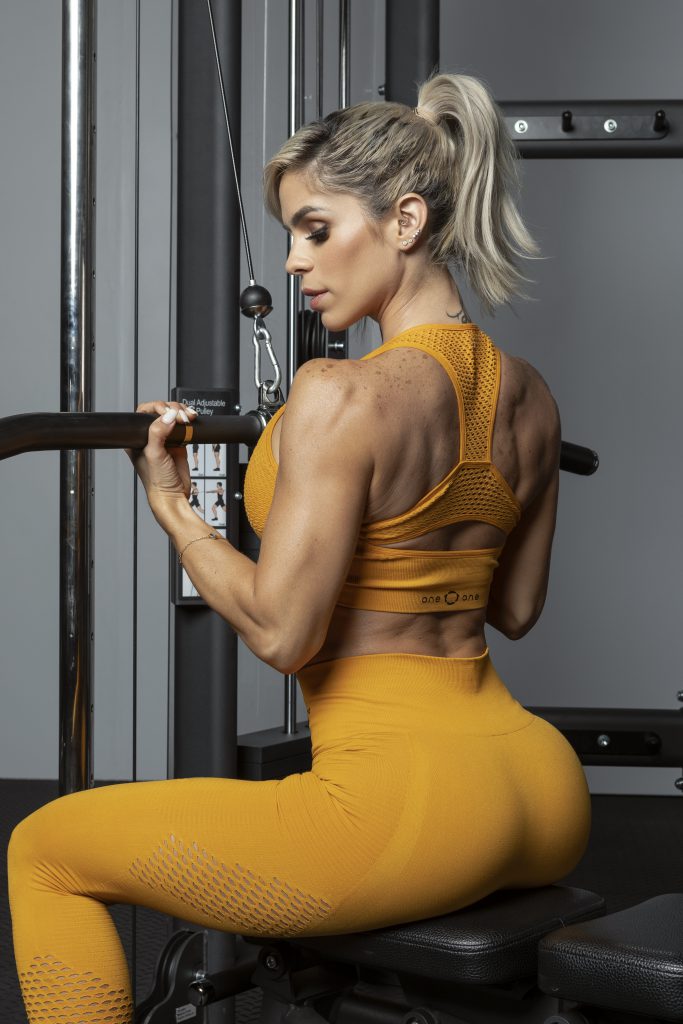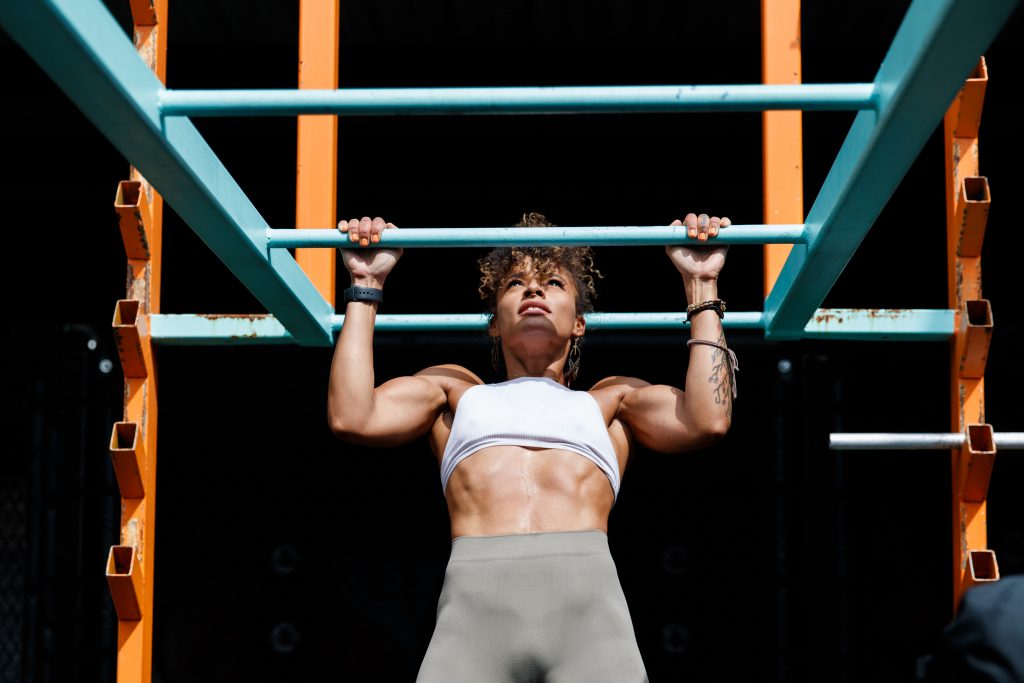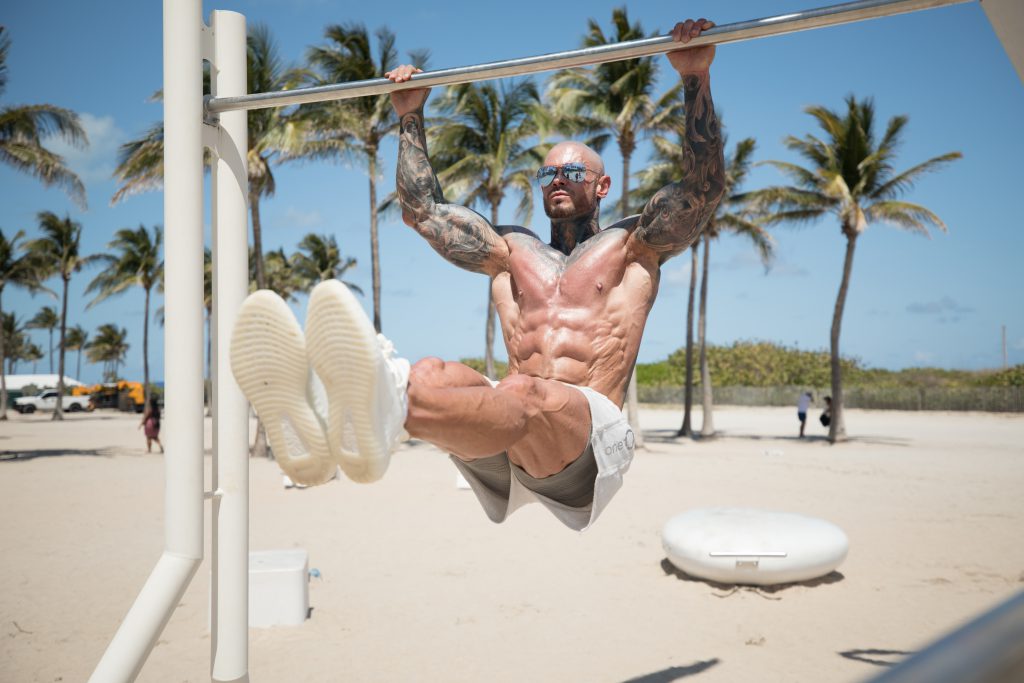
Pull-ups are without a doubt one of the best bodyweight exercises for your upper body. Arm, shoulder, and back muscles that are responsible for nearly all upper-body movement are the targets of traditional pull-ups, making them ideal for building functional strength in addition to impressive muscle mass.
Because pull-ups move these muscles in such a unique way, many people find it difficult to build up the strength needed to accomplish the first pull-up. Even those who do manage to complete pull-ups frequently plateau. For the most part, both of these problems can be solved with exercises that target the same muscle groups as pull-ups.
Check out the workouts in this guide to work up to that first rep or increase your pull-up count. You can use these exercises to build tons of upper-body muscle mass in addition to increasing your pull-up strength.
In This Content
Muscles Worked in Traditional Pull-Ups
Though the pull-up is mainly an upper-body exercise, it also requires lots of action from the core and other key stabilizing muscles. Here are some of the muscles and muscle groups that see significant activation during a pull-up:
1. Latissimus Dorsi
The latissimus dorsi, also referred to as the lats, is the biggest back muscle and the largest muscle in your upper body. It’s located in the lower part of your back and stretches from the spine to the armpit. Lats’ primary function is the various movements of the shoulder joint.
Since the shoulder joint is such a common site for injury, strong lats are vital. Lat strength also helps in many weightlifting and strength training moves that require the shoulder to support significant amounts of weight.
2. Lower Trapezius
Also located on the back of the body, the trapezius muscles’ function is to move the scapular muscles, whose role is to help pull the shoulder blade back or raise it. The lower section of the trapezius muscle is the part that lowers the shoulder blade muscle.
When you perform a pull-up, your shoulder blades need to be set back so your body can lift your body weight, which is why the lower trapezius muscle gets such a workout.
3. Erector Spinae
Located along the spinal column, the erector spinae muscles work to rotate your torso from side to side and they also straighten your spine. Strong erector spinae keeps you from leaning forward or hunching your shoulders. So when you have ample pull-up strength, you have better posture, too.
Helpful hint: Find more upper-body strength-building exercises in our Bodybuilding 101 Fitplan!
4. External Obliques
The oblique muscles are abdominal muscles located on the sides of your torso. You can find them where “love handles” form when you’re habitually inactive. The obliques’ function is to rotate the side of the torso opposite them and bend whichever side of the torso they are on.
Obliques also pull the chest down. When they sustain a significant enough injury, you could experience pain when you breathe, laugh, or cough. Severe strains could take months to heal, but you can avoid this annoying circumstance by building oblique strength with pull-ups.
5. Infraspinatus
Although it doesn’t enjoy the name recognition some of the other muscles on this list do, the infraspinatus plays an important role as a stabilizing muscle in the rotator cuff. Anytime you rotate or raise your arm, the muscles in and around the rotator cuff come into play.
Injuries are very common in this area, especially for people who overload their arms and shoulders during a workout routine. If you tear your rotator cuff seriously enough, it could put you out of commission for weeks or months, which puts a pretty serious damper on any fitness goals you’ve set.
6. Pectoralis Major
Like push-ups, bench presses, and flyes, pull-ups activate your pecs as they put a strain on your arms and shoulders. If you want an immaculate torso, you have to show your pecs some love. Beyond the aesthetic value of chiseled pecs, these muscles also move your upper arms forward, sideways, and in circles.
7. Biceps Brachii
If you’ve spent any time in a gym at all, you already know how important the biceps are to people who work out. While it has an outsized influence over many lifters, the functional importance of the biceps is nonetheless important.
The biceps brachii works to help elevate the shoulder, bend the elbow joint, and rotate the forearm. Big biceps make you look ripped but they also have foundational importance for functional upper-body strength.
Pull-ups also work your triceps, unlike chin-ups which require an underhand grip and take much more work from the biceps brachii. Pull-ups are better for building more well-rounded muscle mass on your upper arms.
Helpful hint: Give your biceps a serious workout with our Dumbbells at Home Fitplan!
How to Perform the Perfect Pull-Up
Before we get into entire workout routines for building strength, let’s take a look at how the basic pull-up exercise is performed. Pay attention to the form notes to make sure you get all the strength benefits of this stellar bodyweight exercise.
1. Approach the pull-up bar and grab onto it with your hands shoulder-width apart in an overhand grip.
2. Lift your legs off the ground and leave your arms fully extended to get into a dead hang position.
3. Engage your core and pull your shoulder blades back.
4. Pull up using the muscles in your upper back around the shoulder blades. Keep going until your chin clears the pull-up bar.
5. Lower back to the starting position and repeat from the original dead hang position.
6. The exercise might sound simple enough when it’s written out, but pull-ups are the most challenging bodyweight exercise for people of all fitness levels.
Workout Routine 1: Build Strength for the First-Time Pull-Up
Doing a pull-up for the first time is a benchmark moment in every fitness journey. People who are starting from zero and have little to no muscle mass have to concentrate on building their pull-up strength with other exercises, as do those who have plenty of muscle mass on their body but still have trouble with the elusive first pull-up.
Try this workout routine a few times a week to continuously build up strength for that first pull-up.

1. Lat Pull-Downs
Nothing beats the lat pull-down to build strength in the latissimus dorsi. Most gyms have a lat pulldown machine, which has a bench underneath a horizontal bar that’s attached to a cable. If you don’t have access to a gym with a lat pulldown machine, you can also use a resistance band and a high anchor point.
On the machine, you just need to set your weight level, then sit on the bench and take a grip on the overhead bar the same way you would on a pull-up bar. If you want to do the banded version, connect your band to an anchor point like a doorframe or a hook. Kneel and hold one end of the resistance band in each hand.
Make sure your hands are still a bit more than shoulder-width apart to mimic the pull-up stance. Your arms should be fully extended in the starting position. Pull the band down with both hands and then slowly return to the starting position.
2. Dead Hangs
If you attempted to do a pull-up, you already got into the position for a dead hang. For this exercise, you just need to stay in that dead hang position for 10 – 30 seconds 5 times with a brief rest interval. If you can’t do 5 sets, keep the dead hangs in your routine until you can.
For a good home workout, you can invest in a doorframe pull-up bar or you can use any other horizontal bar. Just make sure it’s sturdy enough to support your body weight without moving.
Get an overhand grip a bit wider than shoulder-width on the bar and lift your feet. Your arms should be completely extended. Try to make sure your body isn’t swinging or otherwise moving from the momentum of getting into the starting position.
3. Australian Pull-Ups (Bodyweight Rows)
Another great move for people who get their workouts in at home, the bodyweight row is also perfect for building your body’s pulling power. All you need is a low horizontal bar or a coffee table that you can slide underneath. For help visualizing this exercise, imagine an upside-down push-up.
To get into the starting position, slide your legs underneath the bar and support your weight on your heels. Take an overhand position more than shoulder-width apart just like you would for a pull-up and hold onto the bar with your arms fully extended.
Next, all you have to do is pull-up until your chest reaches the bar and then return to the starting position. The pulling action is easier because your legs have some support from the ground. Try 15 reps per set and 3 – 4 sets, just make sure you don’t get going too quickly and lose your form.
Helpful hint: Learn more weight lifting and bodyweight exercises in our Body Rev Fitplan!
4. Assisted Pull-Ups
Whether you have a friend or personal trainer spot you or you use resistance bands or a raised platform, you can increase your pull-up strength with assisted pull-ups. They’re the same as traditional pull-ups but one of the methods we just mentioned can be used to reduce the amount of weight you have to lift, making the move easier.
One thing to be careful of is the resistance band-assisted pull-up. The band helps you at the beginning so you might be able to get further into the pull-up motion, but by the end of the move, the band won’t give much support at all.
Many people try to use band-assisted pull-ups to get to their first traditional pull-up and see a plateau for this reason. It can be pretty discouraging, so don’t rely on the banded version of the assisted pull-up too much.
Workout Routine 2: Approaching 4 – 8 Pull-Ups
If you’ve already built up enough strength to get that first pull-up done, congratulations! You’ve crossed a big milestone. The number of pull-ups you can do varies with your body type. For women, 3 – 4 pull-ups are normal, while men can typically do up to 8 when they’re fit.
Of course, you can progress past this point. But for that period after the first pull-up when you still want to increase your pull-up strength, use the following exercises.

1. Negative Pull-Ups
This exercise reverses the pull-up routine so the hardest part comes first and you can practice the eccentric movement of the second half of the exercise. To successfully perform a negative pull-up, you’ll need some kind of elevated platform so that you can jump up into what would be the highest position of a traditional pull-up.
It might take some practice to jump up and grab the bar in a wide grip position with your chin above the bar, but you’ll get the hang of it after a few attempts. Jump up into this position and slowly lower down into the dead hang.
You don’t necessarily have to drop down to your feet again, but if you do, you can add a little cardio to your pull-up routine.
2. Towel-Grip Dead Hang
Grip strength is critical for pull-ups. Even if you have strength in your back and arm muscles, your hands and forearms could fatigue without sufficient grip strength.
For the towel-grip dead hang, you’ll need a towel to toss over the pull-up bar. Make sure it isn’t a slick sweat towel since you have to support your bodyweight with it. Throw the towel over the bar and grip it, then lift your legs to a dead hang.
If you want to mimic the wide grip of traditional pull-ups more closely, you can use two towels and throw them over the pull-up bar the same distance apart as your hands will be. Hang off the towels for as long as possible and repeat 3 – 4 times after 60 – 90 seconds of downtime.
3. Close-Grip Chin-Up
Moving your hands closer together and switching to an underhand grip turns the pull-up movement into a chin-up. Your biceps will bear more of the weight in this variation, taking some strain off your back muscles and making the move much easier.
Other than those changes, the movement is the same as regular pull-ups. If you find you can do several pull-ups before your back muscles wear out and your biceps are still fine at that point, you can use this variation to exhaust them. Make sure you also target those muscles with the right back exercises to increase your pull-up count.
Workout Routine 3: Breaking Through Plateaus
After some months of the first two pull-up routines, you should be able to do several pull-ups, perhaps as many as eight. If you plateau at a lower number than that but you can execute many pull-ups with the correct form, try using some of these exercises in your workout routine.
1. Side-to-Side Pull-Ups
Stand underneath the pull-up bar sideways and grip it with your hands almost touching. The goal of this exercise is to change the pull-up motion just enough for you to build pull-up strength with additional reps without making it so easy that your body doesn’t continue to build strength.
Lift your legs to get into a dead hang and then lift your body until your left or right shoulder touches the bar. Lower back to the starting position and when you go up for the next rep, use the opposite shoulder to touch the bar. Alternating shoulders recruits different muscles for more well-rounded muscle mass.
2. Weighted Pull-Ups
If you want to build more pull-up strength but you can’t seem to increase your rep or set count at all, consider adding additional weight. You can accomplish this task by attaching a resistance band to the vertical sections of the pull-up bar or you can simply hold dumbbells or a weight plate with your feet.
The additional weight will challenge your body even more. If you find you can’t do as many reps when you have the weight, that’s fine. It will still help your body build more strength so that when you try traditional pull-ups without the weights next time, you can hopefully do more.

3. Pull-Up to Leg Raise
Slow down the pull-up motion to keep your muscles engaged for longer. It’s also a great way to give lower-body muscles like the glutes, hamstrings, and calves a little attention on pull-up day. The glutes are important for upper-body stabilization and support so increasing their strength can help increase your pull-up count as well.
For this move, you raise both legs out in front of you at the top of the pull-up. Make sure they stay extended throughout the movement. An isometric pause of 3 – 5 seconds can further develop strength for your entire body.
[“source=fitplanapp”]
